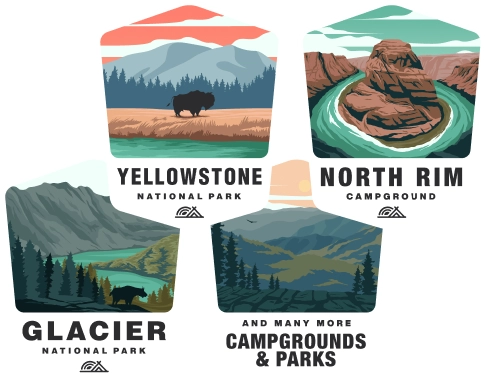Camping at Rio Grande Village (Big Bend)
Overview of Big Bend National Park
Big Bend National Park is located in southwest Texas and includes the entire Chisos mountain range and a large swath of the Chihuahuan Desert. The park is unique because of its remarkable geographic diversity, ranging from desert to mountain habitats. It is known for its natural resources and recreational activities such as hiking, camping, bird watching, stargazing, and geological exploration.
Camping Information
Campgrounds within the Park
Big Bend National Park offers a variety of camping options with three developed frontcountry campgrounds:
- Chisos Basin Campground
- This is situated in the Chisos Mountains and is the most popular due to its higher elevation and cooler temperatures.
- Rio Grande Village Campground
- Located near the Rio Grande, this campground is a good place for bird watching and riverside scenery.
- Cottonwood Campground
- It is a quieter and more secluded option, close to the Santa Elena Canyon.
Each campground has restrooms with running water and flush toilets, but only Rio Grande Village has showers available (managed by a park concessioner, not the NPS).
Backcountry Camping
For those seeking a more isolated experience, there are backcountry campsites that you can access with a vehicle, by backpacking, or even by river. A permit is required for all backcountry camping, and these can be obtained at any visitor center within the park.
RV Camping
RV camping is available at the developed campgrounds, but there are no hookups. An RV dump station is available at Rio Grande Village.
Group Camping
Specific areas are designated for group camping by reservation at the Chisos Basin and Rio Grande Village campgrounds.
Reservations and Fees
- Reservations
- Campground reservations can be made for the Chisos Basin and Rio Grande Village campgrounds through the National Recreation Reservation System.
- Remaining sites are available on a first-come, first-served basis, but they can fill up quickly during peak seasons.
- Fees
- There are fees for camping, and these vary depending on the campground and type of camping.
- Entrance fees to the park are separate from the camping fees.
Best Times to Visit
The best time to visit Big Bend National Park for camping is either in the spring (March to April) or fall (October to November) when temperatures are most comfortable. Summers can be exceedingly hot, especially in the lower desert areas, and winters can bring cold temperatures and occasional snow at higher elevations.
Safety and Regulations
- Weather
- Keep track of the weather as flash floods can occur in the desert, and high winds can make driving and hiking dangerous.
- Wildlife
- Be cautious of wildlife such as bears and mountain lions. Follow park guidelines to store food appropriately.
- Fire Restrictions
- Check for current fire regulations as they can change due to the dry climate of the park.
- Stargazing
- Avoid using white-light flashlights at night to preserve the night sky for stargazing.
Activities
Aside from camping, Big Bend offers a myriad of activities including:
- Over 150 miles of hiking trails ranging from easy walks to strenuous hikes.
- Wildlife and bird watching, as the park is a habitat for many species unique to the Chihuahuan Desert.
- Geologic exploration, as Big Bend has a rich geological history.
- River trips along the Rio Grande can include canoeing, kayaking, and rafting.
Remember to check the official National Park Service website for Big Bend National Park for the most up-to-date information regarding camping, conditions, and regulations.
